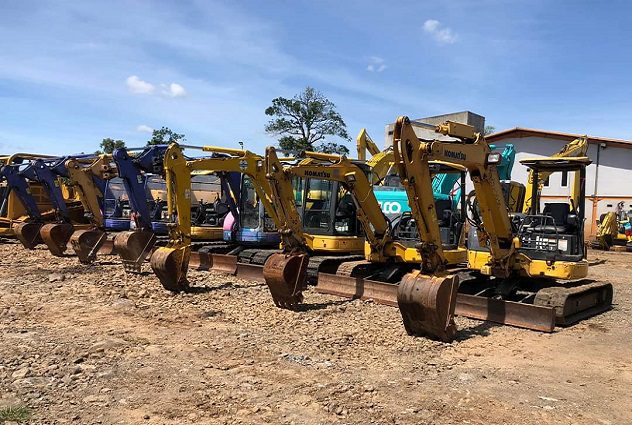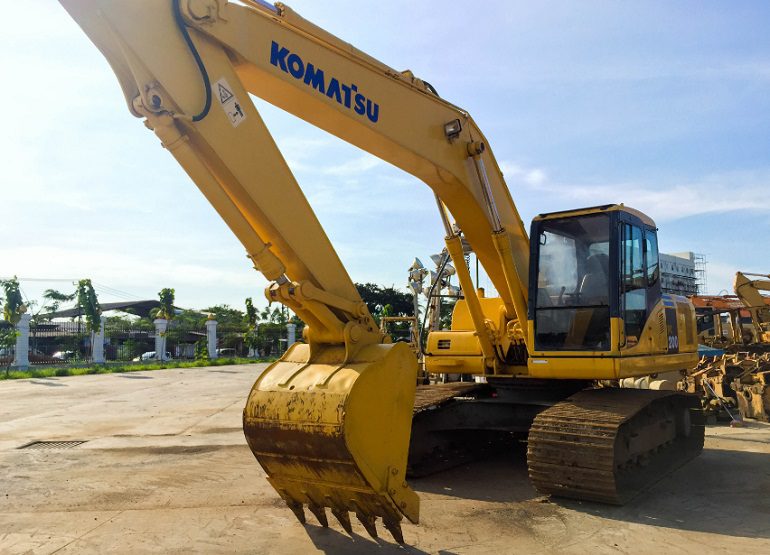The bridge is an important infrastructure that facilitates community mobility and supports economic activities. This infrastructure was built to connect two parts of the road that were cut off due to obstacles. As the main means of transportation, Bridge construction must be built strong and sturdy.
Bridge construction requires a strong foundation to be able to support the entire weight of the bridge. Besides that, This strength is also needed so that the bridge can be crossed by passing vehicles safely. That is why building a bridge involves a long process and complex stages.
There are various types of connecting bridges which are differentiated based on their structure and type of construction. Through this article, let's get to know what bridge construction is, the types, as well as stages in its development.
What is Bridge Construction?
Bridge construction is an infrastructure building created as a means of transportation to connect two separate locations. Bridge infrastructure allows people or moving objects to cross the previous area.
The bridge functions as a connecting structure for the part of the road that is cut off due to natural or artificial obstacles. Bridge making aims to overcome obstacles that block road access, like a valley, river, irrigation channel, disposal, train, or reservoir.
The path that can be connected by the bridge is that it can be a vehicle road, railway line, or a special pedestrian road. The existence of a bridge does not only shorten the trip time to a place, but also open access to areas that were previously difficult to reach.
Types of Bridge Construction
The construction of a bridge in one place with another place can be different in terms of the structure and type of construction. The difference between this type of bridge is adjusted to the condition of the terrain, design, and its function as a liaison.
Here are some types of bridge construction and explanations that you need to know:
1. Plate bridge
This type of bridge is generally designed in a shape like a horizontal structure element. The horizontal shape serves to transfer dead loads and living loads to vertical supporting elements in the bridge structure system.
2. Frame bridge (Truss Bridge)
Truss Bridge is a type of bridge whose construction is stronger because it uses a framework truss triangular shaped. Even though the pole does not stick directly to the bottom or land, The triangle frame makes the bridge pole more stable and sturdy by connecting one pole to another.
Besides that, Diagonal lines on the bridge frame function to distribute the load over a wider area. The design of this bridge frame is designed to prevent pressure from being concentrated at just one point.
3. Beam Bridge (Beam Bridge)
Often referred to as a bridge girder, This type of construction is known as the simplest in bridge construction. Usually, This bridge has a straight horizontal design, equipped with vertical poles as supports to provide stability.
The bridge support pillars are usually made of steel or concrete which are embedded in the ground. Beam bridge generally built to connect two areas that are relatively close, like a location separated by a river.
4. Arch Bridge (Arch Bridge)
The arch bridge is known as one of the oldest construction designs in the world. Usually this bridge is made of material such as cast concrete and stone. This design is often used for railroad tracks, especially in hilly areas with steep terrain.
But this type of bridge has a weakness in terms of vulnerability to changes in temperature and weather, So therefore, This bridge requires intensive care in order to continue to function properly for decades.
5. Cable bridge (Cable Stayed Bridge)
This type of bridge construction uses a cable as the main component to support the traffic floor. The cable is directly supported by the tower or tower. This structure consists of girder with one or more towers placed on the pillar of the bridge in the middle of the stretch.
With a relatively low load center, bridge cable-stayed very suitable for use in earthquake -prone areas. Besides that, This construction is also ideal for a variety of stretches, starting from 100 until 600 meter.
6. Suspension bridge (Suspension Bridge)
Suspension Bridge is a type of bridge that uses the main cable (main cable) to support the hanging cable that supports the traffic floor. The traffic floor on this bridge is usually not directly connected to the pillar because the girder load is fully supported by the cable.
If there is strong wind with high intensity, This bridge can be closed to stop the flow of traffic because the wind conditions can endanger the driver's stability. This type of hanging is generally used for long stretches to reach 1.400 meter.
7. Cantilever bridge
The cantilever bridge has a characteristic in the form of a vertical pillar that is embedded in the ground. This pillar serves to support the horizontal deck that extends on it. Besides that, This bridge uses a flat foundation with a steel truss as the main construction material.
8. Bowstring Bridge
In terms of foundation structure, bridge bowstring is a combination of an arch and a suspension bridge. This bridge relies on horizontal forces to support its curved structure. The arch is located above the traffic lane, while the vertical elements automatically function as deck supports.
Read Also : 4 Types of Construction Projects, Goals and Examples
Bridge Construction Stages
Bridge construction has a structure or characteristics that are different from other types of construction. Building a bridge requires separate design calculations and schemes, as well as complex stages.
The following are the stages of bridge construction starting from planning to completion:
- Planning
- Architectural Design
- Site Preparation
- Foundation Construction
- Installation of Main Structure
- Bridge Floor Construction
- Top Frame Installation
- Completion of Side Structures and Railings
- Road Surface Solutions
- Solutions and Testing
- Quality Control
Read Also : 6 Stages of Building Construction Projects According to the Indonesian Architects Association
What is Part of Bridge Construction?
Bridge construction consists of several main parts, namely the upper structure, bottom structure, and the foundation.
- Upper structure: the part that transfers the load of the bridge floor to the horizontal direction.
- Bottom structure: parts that support or support the load of the upper structure and other loads caused by water flow, ground pressure, and others.
- Foundation: The part receives the load from the main frame and transmits it to the ground or material below.
What are the superstructures of bridges??
The bridge's superstructure consists of several parts, namely the sidewalk, girder, and diaphragm beam.
- Sidewalk: The path is made higher than the road, but still parallel. This path was made for pedestrians.
- Girder: The part in the upper structure whose function is to distribute the vehicle load from the top to the bottom or abutment.
- Diaphragm Beam: The supporting part is elongated and its function is only as an ordinary supporting beam, not as a support for the floor plate load.
What Foundations are Used on Bridges?
The foundations used on bridges can be divided into several types. The choice of foundation type must take into account the characteristics of the soil, structural load, as well as environmental conditions at the construction site.
The following are the types of bridge foundations that are commonly used:
- Pile Foundation (Pile Foundation): The foundation is made of concrete or steel pillars that are embedded into the ground until they reach a strong layer. Suitable for soil that cannot support the weight of a bridge on the surface.
- Palm Foundation (Spread Footing): Shallow foundation in the form of concrete plates placed on the ground and to support the column or pole on the bridge.
- Drill foundation (Drilled Shaft): This foundation consists of an enlarged drill hole and filled with concrete. Suitable for soft or clay soil and used for a bridge with heavy loads.
- Limestone foundation (Caisson Foundation): The foundation used for bridges that cross the river or water. This support consists of reinforced concrete structures placed at the bottom of the water and filled with severe material for stability.
- Direct foundation (Shallow Foundation): The foundation that stands directly on the subgrade. This support is usually used when the hard soil layer is located not too deep.
- Deep foundation (Deep Foundation): Foundation that uses a spikes or drill poles to channel the load to a deeper and powerful soil layer.
What are the bridge components?
The components that have a bridge construction are very many and each has its own function to compile a bridge. The following components on the bridge:
- Foundation
- Pillar or pillar
- Pylon
- Abutment (Edge support)
- A supperstration
- Deck (Bridge floor)
- Girder (Girder)
- The wall of the land retention (Retaining Wall)
- Railing or barrier (Guardrail)
- Connecting bridge or traffic (Approach Structure)
- Drainage system
- Cables and support (for a suspension bridge or Cable-Stayed)
What are the bridge construction materials?
In bridge construction, Material selection is one of the important things that affects the strength and durability of the bridge. There are various materials that can be used for bridge construction, one of which is concrete, baja, cast iron, batu, wood, asfal, aluminium.
Apart from conventional materials as already mentioned, Modern bridge construction has also adopted innovative materials such as fiber composites and pre-stressed concrete. Both materials offer advantages in terms of strength, durability, and efficiency.
Bridges include What Infrastructure?
Bridges are one of the important components in land transportation infrastructure, which also includes part of the highway infrastructure. Highway infrastructure includes a network of roads, bridge, tunnel, and interchanges which function as vital elements in supporting the mobility of people and distribution of goods.
The Importance of Using Quality Heavy Equipment for Bridge Construction Projects
Bridge construction has a different structure from other types of construction, and involves complex stages. For the smoothness and productivity of bridge construction, quality heavy equipment is needed. The construction of this type of bridge must also be adapted to environmental conditions, usage requirements, and others.
If you need it heavy equipment rental quality and guaranteed safety for the project, PT Perkasa Sarana Utama (PSU) ready to be your best equipment rental solution. We provide various types of heavy equipment including mini excavators of the best quality that can support the smooth running of your work.
With pleasure, our team will help you find the right machine for any project. To get the right solution that suits your needs, Don't hesitate to contact us at CS: 0811358378 or email: rent@psualatberat.com. To be more connected, You can also follow our Instagram at @psualatberat.








